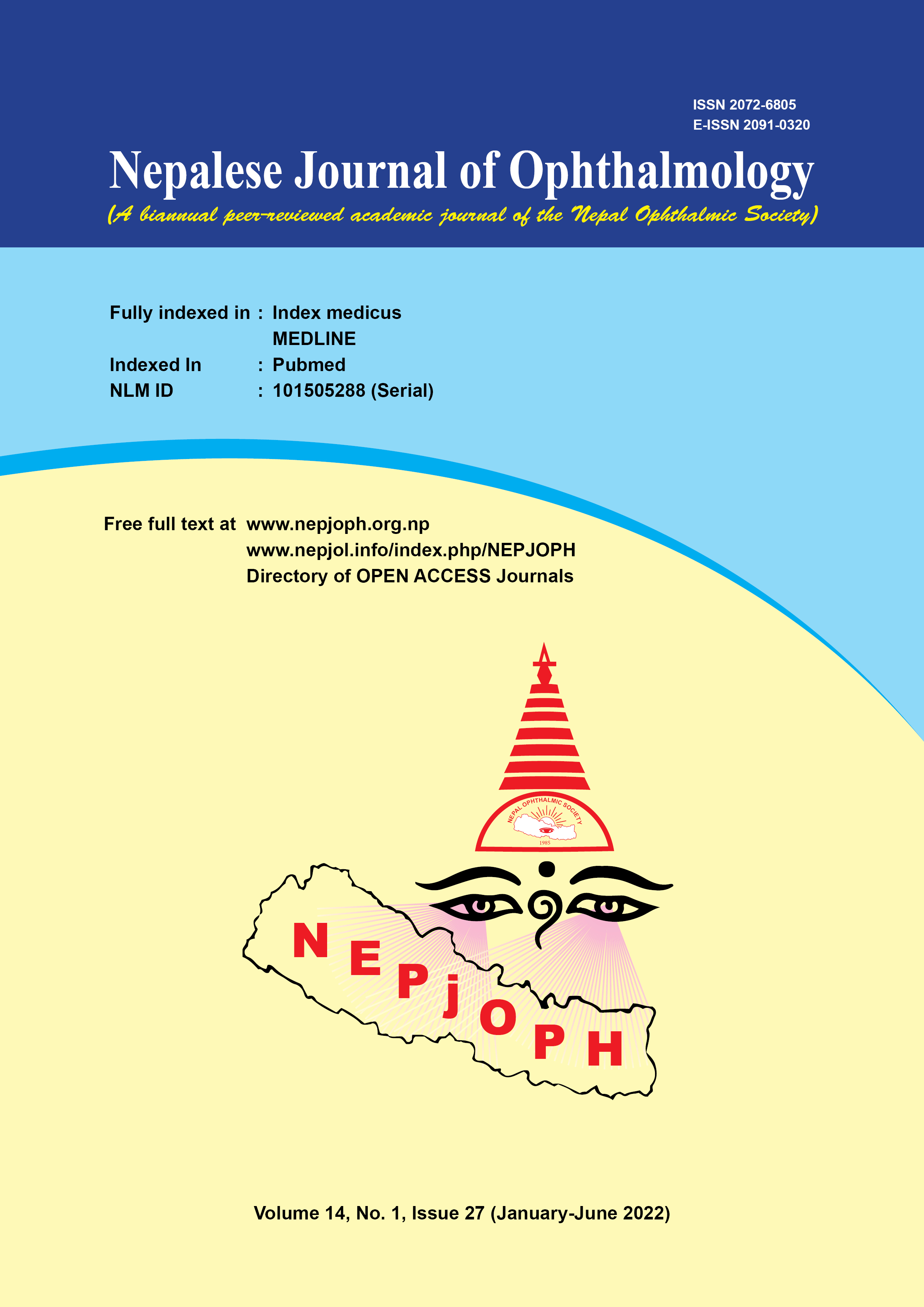Prevalence of Retinitis Pigmentosa in a Tertiary Eye Hospital of Nepal
DOI:
https://doi.org/10.3126/nepjoph.v14i1.38977Keywords:
India, Nepal, Prevalence, Retinitis pigmentosaAbstract
Introduction: Retinitis Pigmentosa (RP) is a group of diffuse retinal degenerative diseases predominantly affecting the rod and cone photoreceptors. The prevalence of retinitis pigmentosa seen in literature is approximately 1:4000. Retinitis Pigmentosa is one of the the most common causes of blindness in the age group of 20 to 40 years. The objective of this study was to determine the profile of retinitis pigmentosa in Terai and Nepal-India border region considering patients seeking care at a Tertiary level Eye Hospital in the terai region (southern part) of Nepal.
Materials and methods: A hospital-based, retrospective study was carried out at R. M. Kedia Eye Hospital. A total of 385 (83 males and 107 females from Nepal and 109 males and 86 females from India) diagnosed patients of Retinitis Pigmentosa were included in the study. Data was collected over a period of eleven years from 2008-2018.
Results: Out of 385 diagnosed Retinitis Pigmentosa patients, 192 (49.87%) were male and 193 (50.13%) were female with slightly female predominance. The prevalence of RP seen in our study was 0.03%. About 51% of the patients visited here were from India and nearby border areas/ villages which cover most of the rural areas of India. In this study it was found that 49.34% of the RP cases were from Nepal, of which 43.63% of cases were from Hindu community and 5.71% from Muslim community and about 50.66% cases of RP were from India, of which 37.67% from Hindu and 12.98% from Muslim community. The peak age of presentation of RP was at 30-39 years (29.09%), followed by 20-29 years (26.75%). The common marriage pattern of consanguinity was found in Muslim community in between the first cousins. In this study the hospital record did not show any evaluation for the syndromic disease in the hospital record, though RP is usually non syndromic and there are literatures where many syndromic forms have been identified.
Conclusion: The prevalence of RP seen in the study was 0.03% (A total of 1101299 sample population of which 385 patients had RP). Since RP is an inherited disease and is one of the non-treatable causes of blindness which runs in the families, a role of counseling to reduce consanguineous marriages should be brought forward to reduce the disease process.
Downloads
Downloads
Published
How to Cite
Issue
Section
License
Copyright (c) 2022 Nepalese Journal of Ophthalmology

This work is licensed under a Creative Commons Attribution-NonCommercial-NoDerivatives 4.0 International License.
This license enables reusers to copy and distribute the material in any medium or format in unadapted form only, for noncommercial purposes only, and only so long as attribution is given to the creator.




